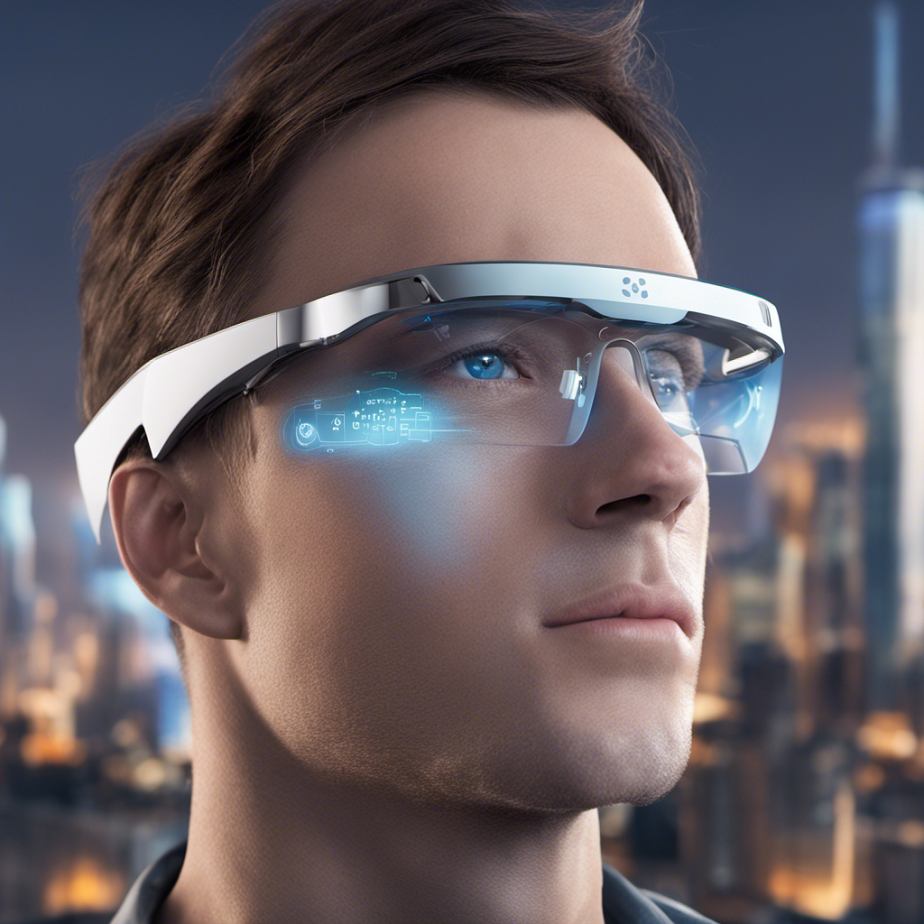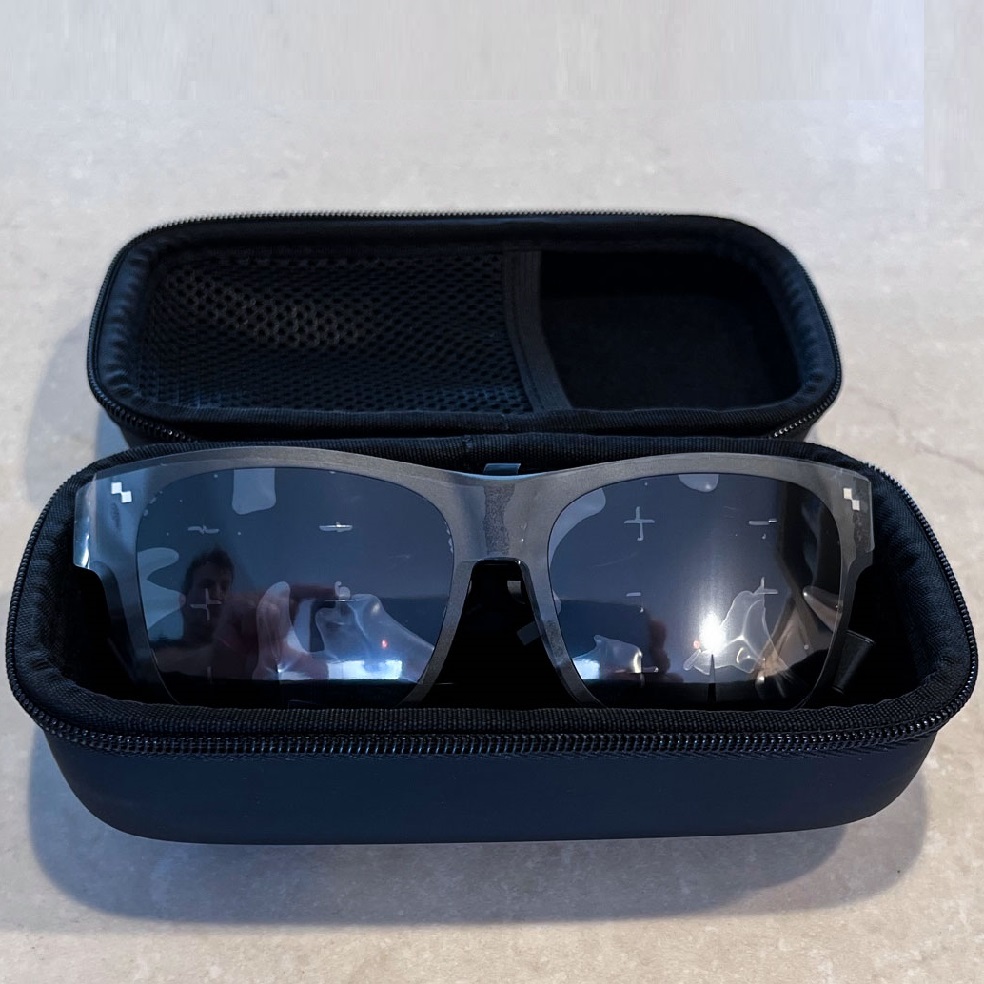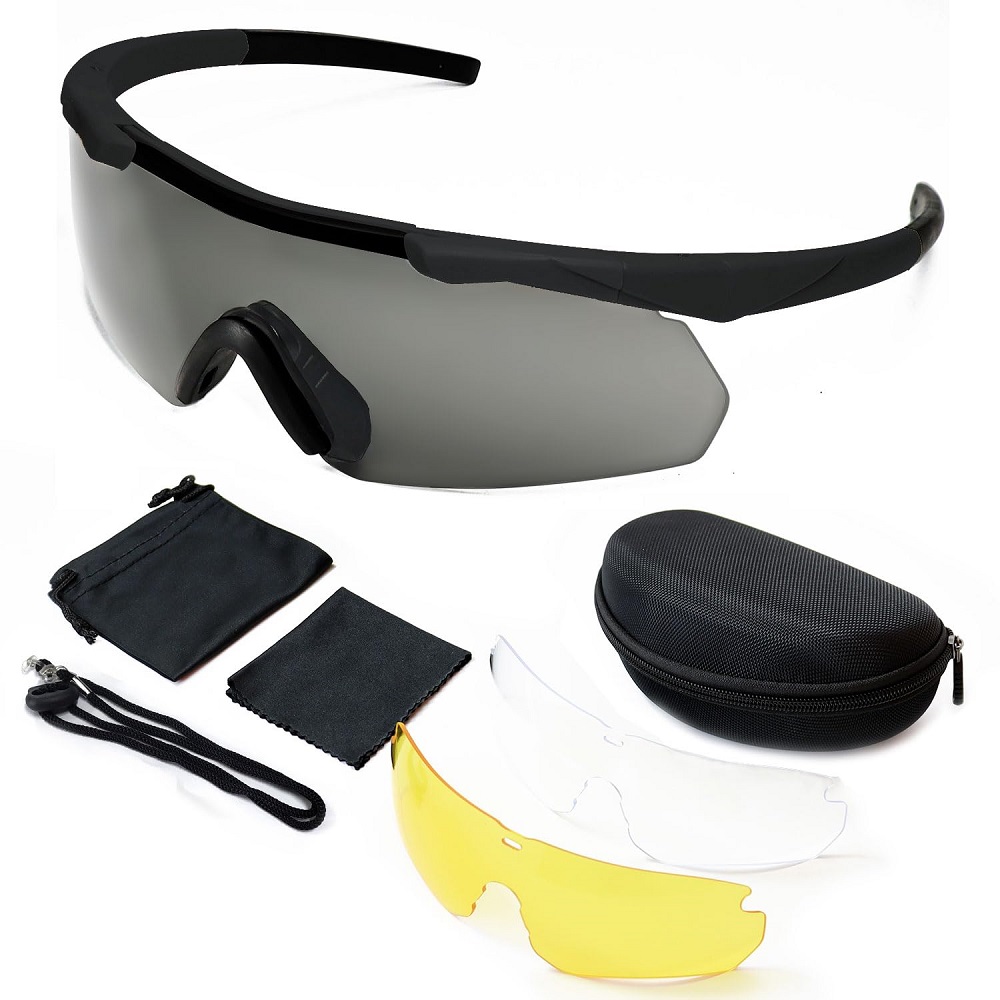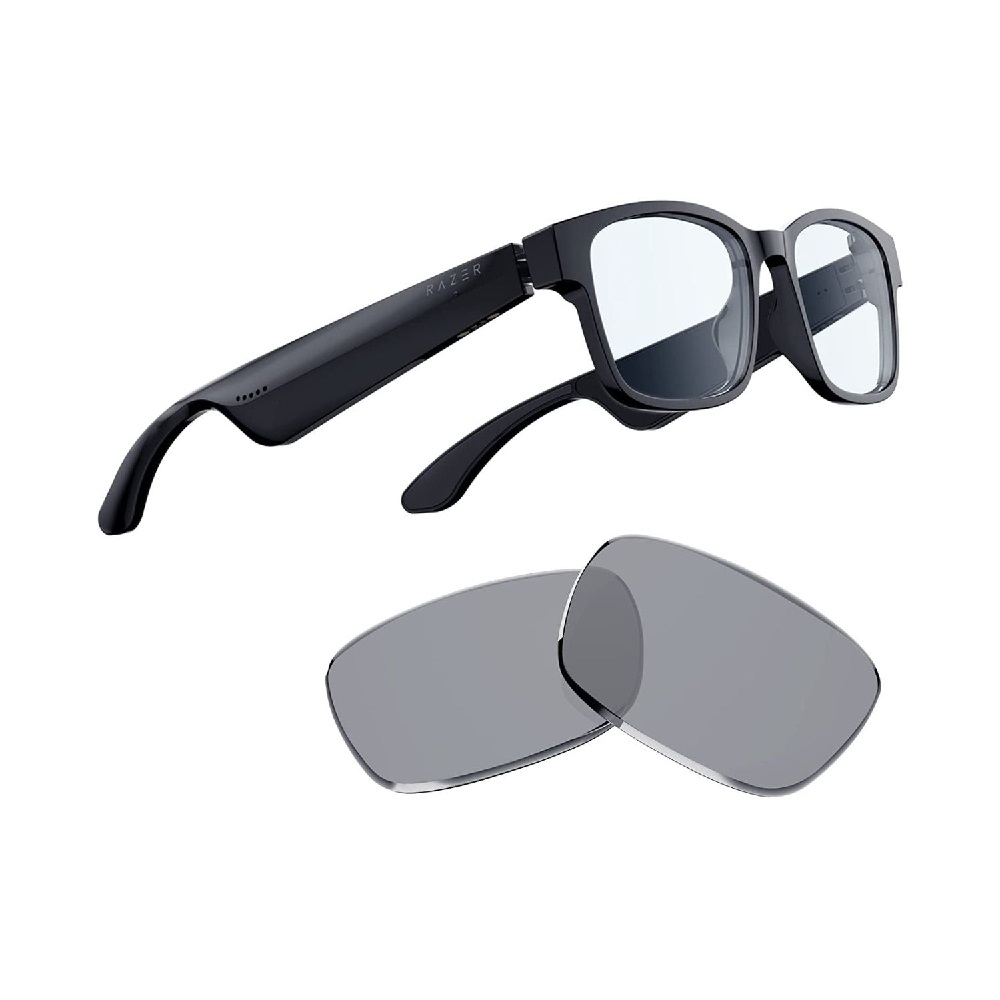Introduction to Smart Glasses
Smart glasses are wearable computer glasses that add information alongside or to what the wearer sees. Through advanced technology, they blend digital information into the physical world. Smart glasses can show notifications, navigate apps, capture videos, and access the internet, all hands-free.
Originally, they appeared bulky and had limited functions. Over time, they’ve become more user-friendly and stylish, thanks to miniaturization of components. Now, these glasses come in a variety of designs and can perform numerous tasks like traditional computing devices, but with the added convenience of being wearable.
The primary aim of smart glasses is to provide users with seamless, real-time information while on the go. You can easily take pictures, record videos, get directions, or read messages without having to reach for a phone. Not only do they serve practical purposes, but they also have become a statement of tech-savvy fashion.
Smart glasses are gradually integrating into various industries and lifestyles, offering diverse functionalities. In the world of gaming and entertainment, these wearable devices enhance experiences with interactive, immersive realities. They serve health and safety purposes by providing vital data directly to the user’s eyesight. Additionally, they can increase personal security and alter the way we communicate.
As technology advances, they hold the potential to change daily life significantly. With continued development, we can expect these gadgets to grow smarter, blending more flawlessly with our natural field of vision, delivering enhanced, context-aware digital information, and ultimately reshaping the scape of personal technology.

Evolution of Smart Glasses Technology
The journey of smart glasses from chunky prototypes to today’s sleek versions is fascinating. Now, reduced component size has enabled more fashionable and powerful designs that appeal to consumers.
The advancement in microprocessors and battery technology has boosted the evolution of smart glasses. This, combined with improved screen resolution, has led to glasses that neatly display crisp, clear digital information. The significant drop in technology costs makes them more accessible.
Wireless connectivity improvements, such as Bluetooth and Wi-Fi, have also played a crucial role. Users can now seamlessly connect smart glasses to other devices, enhancing real-time data sharing and control.
Manufacturers have gone beyond the technology and are focusing on the wearability aspect. They are now lighter and come with more sophisticated and discreet appearance, catering to style along with functionality.
Smart glasses today are not just a glimpse into augmented reality but have actual practical uses. They integrate apps for navigation, communication, and multimedia, becoming invaluable tools for the modern user. With constant refinement, they promise to keep blending deeper into our digital lives.
Core Features of Smart Glasses
Smart glasses are modern tech wonders blending digital and physical vision. They offer multiple core features that enhance everyday tasks:
- Notifications Display: They inform you about messages, emails, and calls without using a phone.
- App Integration: These glasses run apps for navigation, weather updates, and more.
- Media Control: Users can snap photos and record videos hands-free at any moment.
- Internet Access: Most smart glasses provide web browsing capabilities on the go.
- Voice Commands: Speak to control your glasses, making tasks easier and faster.
- Touch Controls: Tap or swipe on the frame to interact with the features.
- Augmented Reality (AR): Overlay digital information on the real world around you.
- Health Tracking: Some track your steps, calories, and heart rate.
- Customization: Change settings to suit personal preferences and needs.
These features show just how versatile smart glasses can be, fitting into various aspects of life. Whether it’s for work, play, or staying connected, they offer convenience and functionality.
The Fashion and Style Aspect of Smart Glasses
The appeal of smart glasses has gone beyond mere functionality; they have become fashion statements. Today’s versions marry technology with design, offering a range of styles from classic to avant-garde looks that can complement anyone’s wardrobe. The shift from geeky to chic has been significant, with brands collaborating with fashion designers to produce frames that rival high-end eyewear collections. Whether you prefer a minimalist look or something bold, there’s a pair of smart glasses to suit your style.
Moreover, the modularity in some models allows for customization, such as interchangeable frames and lenses that reflect one’s personal taste and adapt to different occasions. Sleek lines and subtle integration of tech components ensure they don’t stand out awkwardly. This blend of form and function means you can enjoy the benefits of cutting-edge technology without compromising on style. In effect, smart glasses have transitioned from tech gimmicks to fashionable accessories that can elevate your look.
Not only do these wearable devices keep you connected, but they also serve as a chic complement to any outfit. The growing trend of smart eyewear in the fashion industry suggests that they may soon be as common as the smartphone in your pocket. As smart glasses continue to evolve, expect to see even more innovative designs that push the boundaries between tech and fashion.
Smart Glasses in Entertainment and Gaming
Smart glasses are transforming the entertainment and gaming industries with immersive experiences. Wearers can enjoy augmented reality games that blend virtual elements into the real world. This creates a unique, interactive gaming atmosphere that seems to blur the lines between what’s on-screen and off.
Augmented Reality (AR) Gaming
AR gaming with smart glasses provides an enhanced play experience. Players can interact with virtual objects overlaid onto their environment. Games become more engaging, allowing gamers to fight virtual enemies or solve puzzles in real-time, in the space around them.
Games for smart glasses are evolving swiftly, promising more exciting content. Pokémon Go’s success showed AR’s potential, and developers are building on this. The aim is to bring more sophisticated and diverse titles to users.
Enhanced Movie and Show Watching
Beyond gaming, smart glasses offer tailored viewing experiences for movies and shows. With personal headsets, users can watch their favorite content privately, anywhere. Some glasses project a virtual screen, making it feel like watching a large TV.
Live Events and Concerts
Smart glasses also bring new dimensions to live events, such as concerts. They can provide real-time information, like song lyrics or performer details, enhancing the immersion and audience connection. These features make live performances even more memorable for spectators.
In summary, smart glasses are pushing the boundaries in entertainment and gaming. They offer richer, personalized experiences that weren’t possible before. As technology progresses, we can only expect these experiences to become even more advanced and widespread.
The Role of Smart Glasses in Health and Safety
Smart glasses play a crucial role in health and safety. They provide users with instant access to important information without looking away from their tasks. This capability is especially beneficial in medical and industrial environments where maintaining focus is vital for safety and efficiency.
Medical Applications
In healthcare, smart glasses assist surgeons and doctors during procedures. They display vital patient stats, like heart rate and oxygen levels, allowing medical professionals to monitor patients while staying sterile. Some models even allow for remote consulting, where experts can guide less experienced staff through complex operations or emergencies.
Industrial Safety
In industrial settings, these glasses can show safety alerts and instructions. Workers get real-time updates on machinery status or hazardous conditions in their vicinity. This hands-free data delivery method helps prevent accidents by keeping workers informed and alert.
Training and Instruction
Smart glasses are also used for on-the-job training. They can overlay instructional guides on real-world tasks. This helps employees learn procedures without distracting them from the work at hand. It’s effective for training new employees and refreshing the knowledge of existing ones, directly contributing to workplace safety.
Personal Health
For personal health, smart glasses can track fitness activities and vital signs. They encourage users to stay active and mindful of their health. Features like step counting and heart rate monitoring help people make healthier decisions in their daily lives.
Smart glasses serve as an additional layer of protection and guidance. They deliver essential information while allowing users to keep their hands free and eyes focused, which is fundamental to health and safety in many professions and daily activities.
Smart Glasses and Personal Security Considerations
Smart glasses enhance personal security in several ways.
Instant Documentation Capability
They allow instant photo and video capture. This feature can be key during emergencies.
Live Location Sharing
They can share live location. This is useful for safety during travel.
Discreet Emergency Alerts
They can send discreet emergency alerts. This function maintains privacy while ensuring help.
Evidence Gathering
In case of disputes or incidents, they can gather evidence discreetly.
Access Control
Some smart glasses support access control via facial recognition. This ensures secure entry to premises.
Data Security
They can use encryption for stored data. This protects personal information from misuse.
Smart Glasses Impact on Communication and Social Interactions
Smart glasses reshape how we communicate and interact. Here’s how:
Hands-Free Calls and Messages
Receive calls and texts without using your hands. This keeps you connected while multitasking.
Social Media Sharing
Share experiences instantly on social platforms. Snap photos or live stream effortlessly with built-in cameras.
Enhancing Accessibility
Real-time translations and subtitles aid those with hearing or language barriers. This fosters inclusive communication.
Remote Assistance
Professionals can provide guidance from afar. This is useful for tasks requiring expert input, enabling instant support.
Personal Assistants
Voice-activated assistants answer questions and perform tasks. This makes information access simpler and quicker.
They promise to simplify everyday interactions. They offer a hands-free, efficient way to stay in touch and share moments. As they evolve, expect even smoother and richer social exchanges.
Future Outlook: What’s Next for Smart Glasses?
The future of smart glasses is bright and packed with potential. As technology advances, we can anticipate several trends:
Integrated Advanced AI
Expect smarter AI helpers built into glasses. They’ll manage tasks and offer insights more efficiently.
Improved AR Experiences
Augmented reality will get better. Games, apps, and educational tools will become more interactive and immersive.
Superior Connectivity
They will connect more smoothly with other devices. This will enhance data sharing and user experience.
More Stylish Designs
Designs will get even sleeker. Tech will blend seamlessly with fashion, offering style and function.
Enhanced Health Features
Health tracking will advance. Glasses will monitor more health metrics and sync with medical records for overall wellness.
Better Battery Life
Battery tech will improve. This means longer use without recharging, making them more practical.
Privacy and Security Solutions
Security will be a priority. New features will protect user data and provide control over privacy settings.
Broader Industry Adoption
More industries will use smart glasses. From retail to education, they’ll change how we work and learn.
Voice and Gesture Controls
Control methods will evolve. Voice and gestures will be the main ways to interact with your wearable tech.
As we look to the future, they will undoubtedly become an integral part of our daily lives, reshaping how we access information, interact with the world, and communicate with each other.


